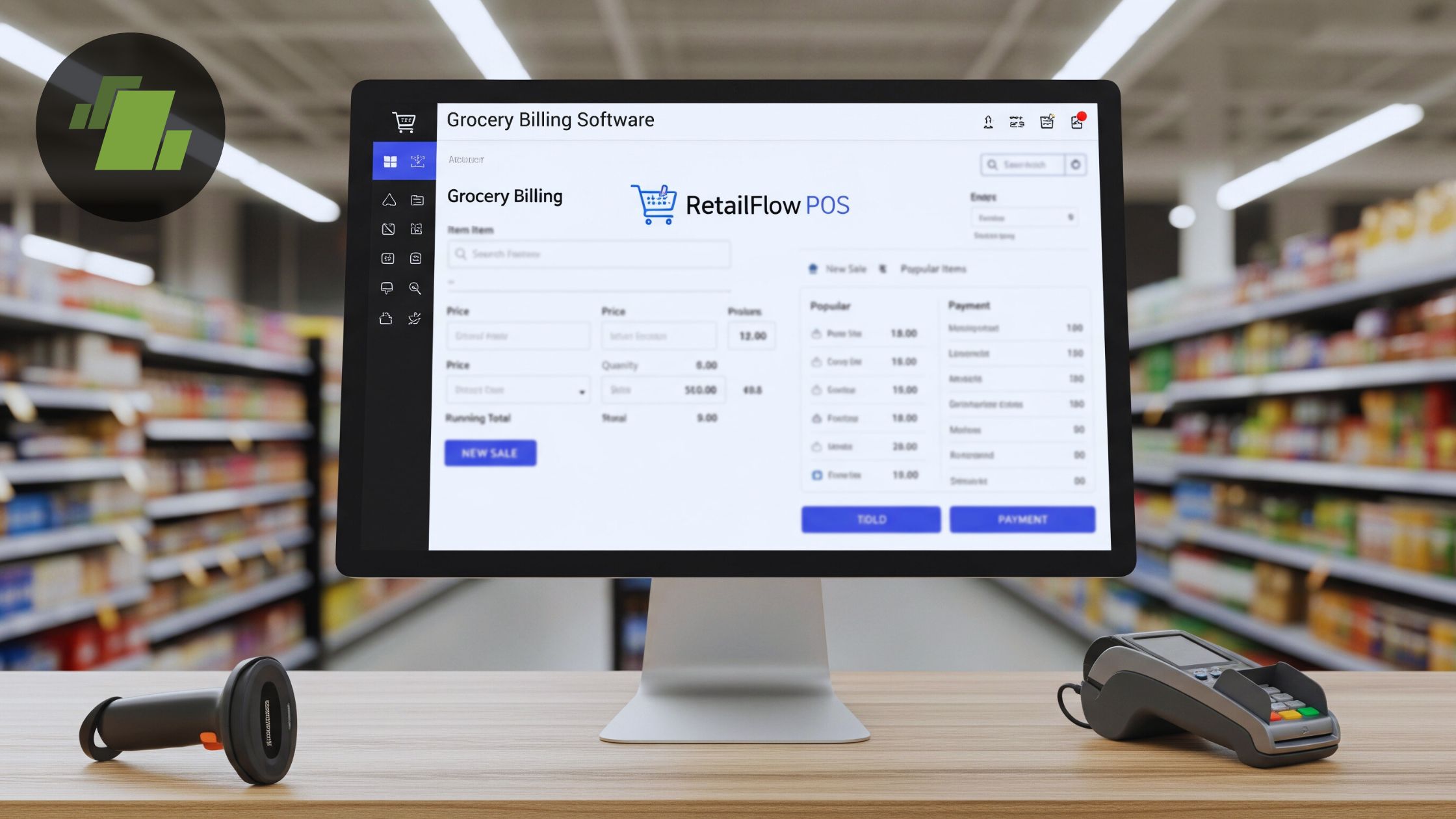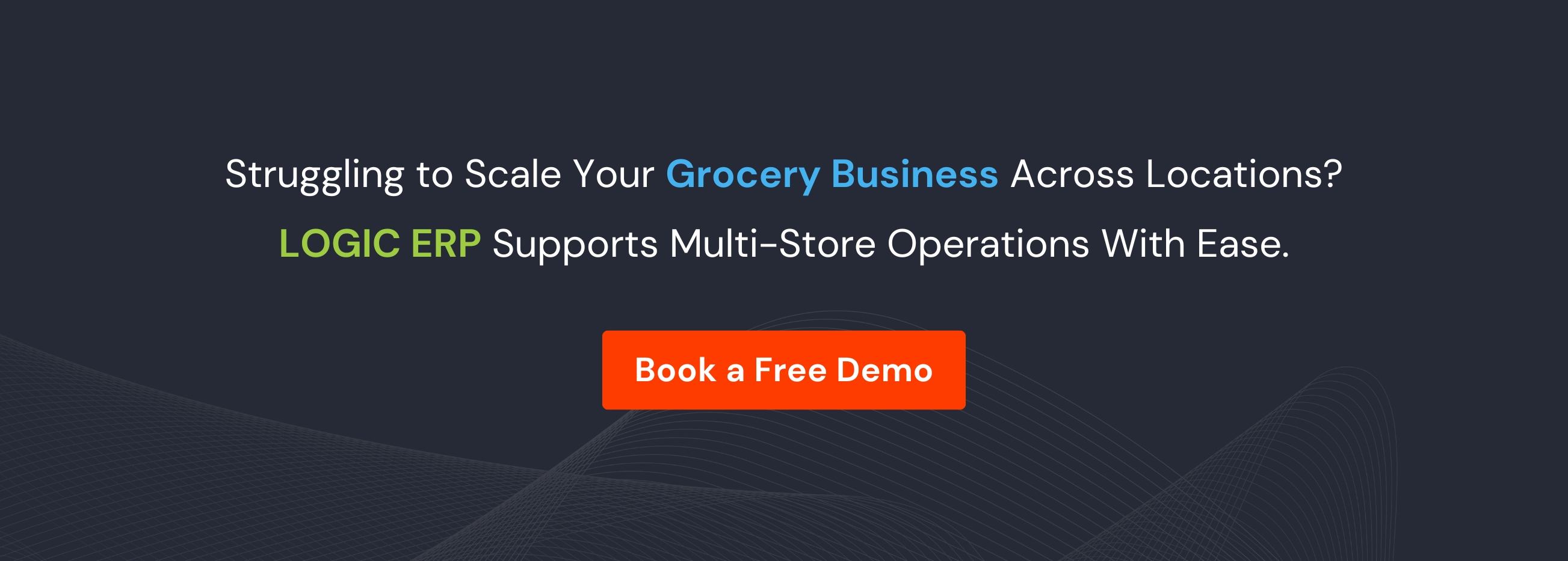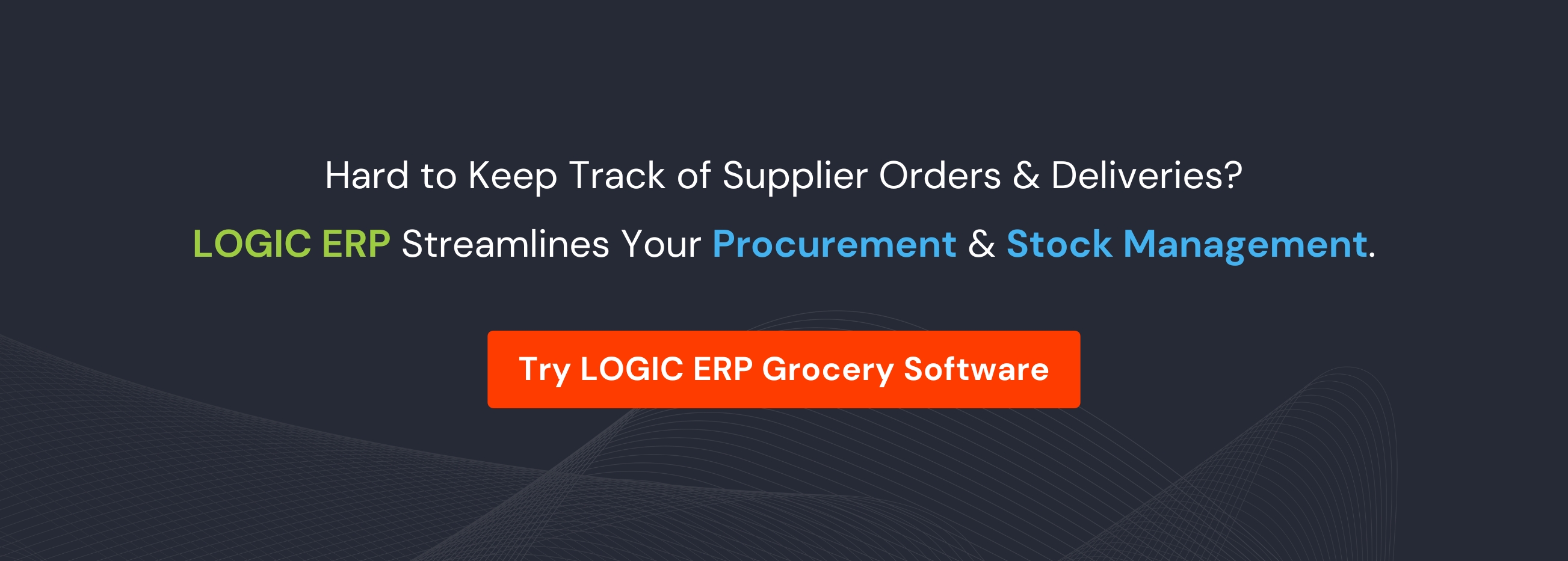Checklist: What to Consider Before Buying Grocery Billing Software for Retail Stores


Summary
Are you tired of slow checkouts, inventory nightmares, and frustrated customers? This comprehensive guide reveals the critical factors that can make or break your grocery billing software decision. Don’t let the wrong choice cost you thousands in lost sales – discover the essential checklist that ensures your software investment drives operational efficiency, delights customers, and fuels sustainable business growth.
Key Takeaways
- Evaluate store size, product complexity, and operational requirements before software selection.
- Choose software with live stock tracking and perishable goods handling capabilities.
- Select systems that connect seamlessly with existing accounting, e-commerce, and supplier platforms.
- Consider all expenses including licensing, maintenance, hardware, and hidden costs.
- Ensure PCI DSS compliance and adherence to local regulatory requirements.
- Use trial periods and check vendor references to validate software performance and support quality.
Introduction
Choosing the right grocery billing software is an important decision that can significantly impact your store’s efficiency, customer satisfaction, and profitability. With numerous options available in the market, selecting the perfect billing software for grocery stores requires careful consideration of multiple factors. This comprehensive checklist will guide you through the essential aspects to evaluate before investing in grocery software for your business.
Understanding Your Business Requirements
Store Size and Operations Scale
Before exploring grocery POS software options, assess your current and projected business needs. Consider whether you operate a single store or multiple locations, as this will influence your choice between standalone systems and comprehensive grocery ERP software solutions i.e. LOGIC ERP that can handle multi-location management seamlessly.
Product Inventory Complexity
Grocery stores handle diverse product categories, from fresh produce with varying weights to packaged goods with barcodes. Your chosen grocery retail billing software must accommodate different pricing models, including per-unit, per-weight, and bulk pricing structures. LOGIC ERP excels in managing complex inventory scenarios that typical grocery stores encounter daily.
Essential Features to Look For
Real-Time Inventory Management
Advanced grocery software should provide real-time inventory tracking to prevent stockouts and overstock situations. Look for systems that automatically update inventory levels with each sale and can handle perishable goods with expiration date tracking. This feature is particularly crucial for maintaining optimal stock levels and reducing waste.
Multi-Payment Processing
Today’s customers expect flexible payment options. Your grocery billing software should support cash, credit cards, debit cards, mobile payments, and digital wallets. Integration with popular payment gateways ensures smooth transactions and improved customer experience.
Barcode Scanning and PLU Support
Efficient checkout processes rely on reliable barcode scanning capabilities. The software should handle various barcode formats and include Price Look-Up (PLU) functionality for items without barcodes, such as fresh produce and bulk items.
Technical Considerations
Cloud vs. On-Premise Solutions
Grocery cloud retail software offers advantages like remote access, automatic updates, and reduced IT infrastructure costs. However, consider your internet reliability and data security requirements. LOGIC ERP provides both cloud and on-premise deployment options, allowing you to choose based on your specific needs and preferences.
Integration Capabilities
Your grocery ERP software should integrate seamlessly with existing systems, including accounting software, e-commerce platforms, and supplier portals. This integration eliminates data silos and streamlines operations across all business functions.
Scalability and Performance
Choose software that can grow with your business. The system should handle increased transaction volumes, additional product lines, and new store locations without performance degradation. LOGIC ERP is designed to scale efficiently as grocery businesses expand.
User Experience and Training
Intuitive Interface Design
Staff productivity depends largely on software usability. Look for grocery POS software with an intuitive interface that minimizes training time and reduces checkout errors. The system should be responsive and easy to navigate, even during peak hours.
Training and Support Availability
Comprehensive training programs and ongoing support are essential for successful software implementation. Evaluate the vendor’s training resources, documentation quality, and customer support responsiveness. LOGIC ERP provides extensive training materials and dedicated support to ensure smooth adoption.
Financial Considerations
Total Cost of Ownership
Beyond the initial software cost, consider ongoing expenses such as licensing fees, maintenance costs, hardware requirements, and upgrade fees. Billing software for grocery stores should provide clear pricing structures without hidden costs that could impact your budget planning.
Return on Investment Potential
Evaluate how the software will improve efficiency, reduce errors, and enhance customer satisfaction. Calculate potential savings from improved inventory management, reduced theft, and faster checkout processes to determine the expected return on investment.
Security and Compliance
Data Security Measures
Grocery stores handle sensitive customer and payment information that requires robust security protection. Ensure your chosen grocery retail billing software complies with PCI DSS standards and includes features like data encryption, user access controls, and regular security updates.
Regulatory Compliance
Different regions have varying requirements for retail software, including tax calculations, receipt formats, and reporting standards. Verify that the software can handle local compliance requirements and tax regulations specific to your operating location.
Reporting and Analytics
Comprehensive Reporting Features
Best grocery software should provide detailed reports on sales performance, inventory turnover, customer purchasing patterns, and staff productivity. These insights enable data-driven decision making and help identify opportunities for business improvement.
Real-Time Dashboard
Look for systems that offer real-time dashboards displaying key performance indicators, current sales figures, and inventory alerts. This visibility helps managers make informed decisions quickly and respond to changing business conditions.
Vendor Evaluation Criteria
Company Reputation and Experience
Research the software vendor’s track record in the grocery industry. Look for companies with proven experience in developing grocery ERP software and a strong customer base. Read reviews, case studies, and testimonials from other grocery store owners to gauge satisfaction levels.
Implementation Timeline
Consider the time required for software implementation and staff training. Some vendors offer phased rollouts that minimize business disruption, while others provide rapid deployment options for urgent needs. LOGIC ERP offers flexible implementation approaches tailored to your operational requirements.
Future Development Roadmap
Technology evolves rapidly, and your software should keep pace with industry changes. Evaluate the vendor’s commitment to ongoing development, feature updates, and integration with emerging technologies like artificial intelligence and IoT devices.
Making the Final Decision
Trial Period and Demonstration
The best grocery billing software providers offer trial periods or demonstrations. Take advantage of these opportunities to test the software with your actual business processes and evaluate staff reactions to the new system.
Reference Checks
Contact existing customers using the software in similar grocery operations. Ask about their experiences with implementation, ongoing support, and overall satisfaction with the solution. This feedback provides valuable insights into real-world performance.
Contract Terms and Flexibility
Review software licensing agreements carefully, paying attention to cancellation policies, upgrade requirements, and data ownership rights. Choose vendors that offer flexible terms and transparent policies that protect your business interests.
Conclusion
Selecting the right grocery cloud retail software requires thorough evaluation of your business needs, technical requirements, and budget constraints. By following this comprehensive checklist, you can make an informed decision that supports your grocery store’s growth and success.
LOGIC ERP stands out as a comprehensive solution that addresses many of the critical factors outlined in this checklist. With its robust feature set, scalable architecture, and industry-specific functionality, LOGIC ERP provides grocery stores with the tools needed to streamline operations, improve customer service, and drive profitability.
Remember that the best grocery POS software is one that aligns with your specific business requirements while providing room for future growth. Take time to evaluate each option thoroughly, and don’t hesitate to ask detailed questions about features, support, and long-term viability before making your final decision.
Frequently Asked Questions (FAQ)
Q1: What is the average cost of grocery billing software?
Contact our experts for ERP demo at +91-73411-41176 or send us an email at sales@logicerp.com to know more about grocery billing software cost/price structure today!
Q2: Can grocery billing software work offline?
Most modern grocery software offers offline functionality to ensure continuous operations during internet outages, with automatic data synchronization when connectivity is restored.
Q3: How long does it take to implement grocery billing software?
Implementation typically takes 2-8 weeks depending on system complexity, data migration requirements, staff training needs, and customization levels required for your specific operations.
Q4: Is cloud-based grocery software secure for payment processing?
Yes, reputable cloud-based grocery software providers ensure PCI DSS compliance, end-to-end encryption, and regular security updates to protect sensitive payment and customer data.
Q5: Can grocery software integrate with online ordering platforms?
LOGIC ERP grocery software seamlessly integrates with e-commerce platforms, enabling unified inventory management across in-store and online sales channels.
Q6: What happens if I need to switch grocery billing software providers?
Most vendors provide data export capabilities, though the transition process varies. Look for providers offering data migration assistance and ensure contract terms allow flexible switching options.
Q7: Do I need separate software for inventory management and billing?
Integrated grocery software solutions combine billing, inventory, and other functions in one system, eliminating data inconsistencies and reducing operational complexity compared to separate applications.
Q8: Can grocery software handle loyalty programs and promotions?
Yes, comprehensive grocery retail software includes built-in loyalty program management, promotional pricing, discount structures, and customer reward tracking capabilities.
Q9: What kind of support should I expect from software vendors?
Look for vendors offering 24/7 technical support, comprehensive training programs, regular software updates, and dedicated account management for ongoing assistance.
Q10: How do I know if my grocery software can scale with business growth?
Evaluate software architecture, maximum transaction capacity, multi-location support, and vendor roadmap to ensure the system can accommodate increased volume and expansion plans.




